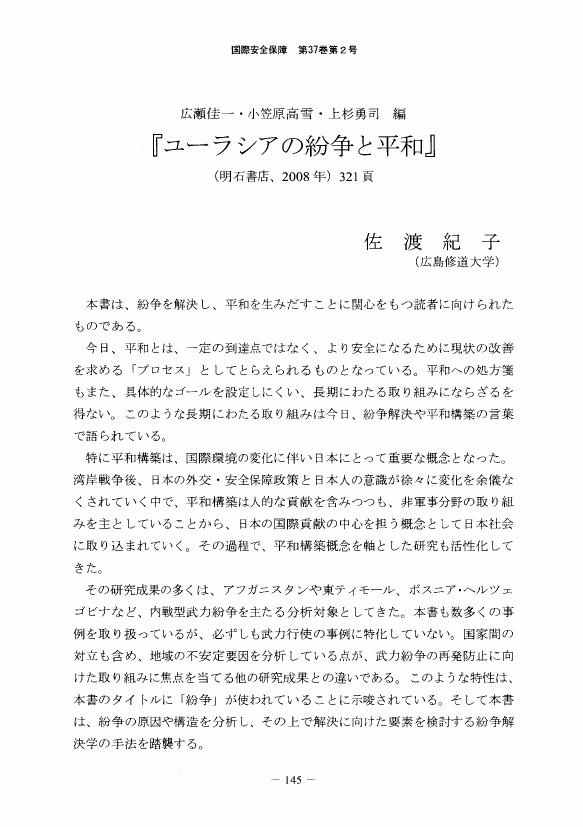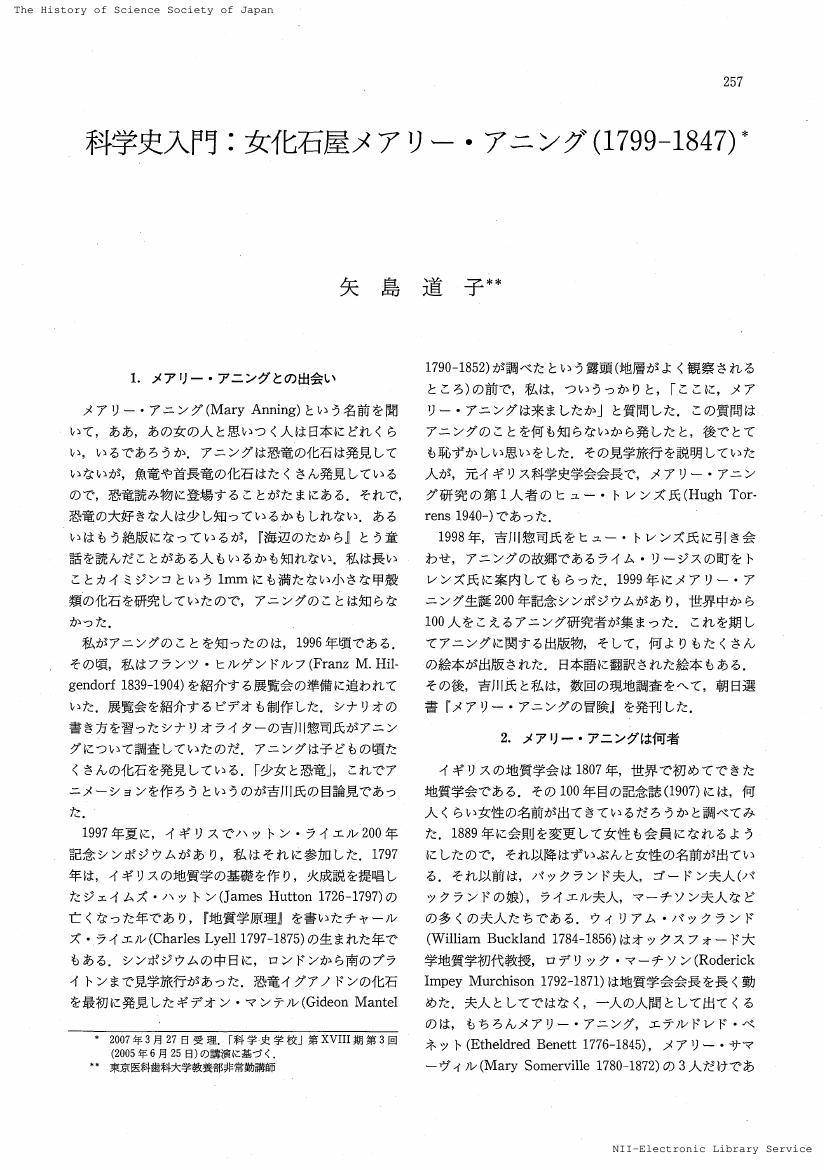2 0 0 0 OA 局地モデルから出力される日射量予測とその予測精度の検証
- 著者
- 大竹 秀明 高島 工 大関 崇 Joao Gari da Silva Fonseca Jr 山田 芳則
- 出版者
- 一般社団法人 エネルギー・資源学会
- 雑誌
- エネルギー・資源学会論文誌 (ISSN:24330531)
- 巻号頁・発行日
- vol.36, no.4, pp.31-39, 2015 (Released:2019-02-14)
- 参考文献数
- 15
A numerical weather prediction model (NWP) has become a useful tool for a forecast of photovoltaic power generation in an efficient operation of an energy management system (EMS). However, forecast products obtained by the NWP have certainly forecast errors. Before using forecast datasets of solar irradiance (or global horizontal irradiance, GHI), we have to understand error characteristic of GHI forecasts from the NWP. In this study, we validated GHI forecasts obtained from a local forecast model (LFM) of the Japan Meteorological Agency (JMA) using the surface-observed GHI data at the JMA stations. The LFM is a high-resolution NWP with horizontal grid spacing of 2km. First of all, case studies of GHI forecasts were conducted for different weather conditions. In cases of clear sky conditions and/or spatially large clouds, hourly-forecasted GHI values were significantly close to hourly observed-GHI values. However, significant forecast errors tended to be large in cases of high-level clouds (cirrus) and/or cumulus clouds. Seasonal and regional variations of GHI forecast errors were found from evaluations of forecast errors. Compared to a mesoscale model (MSM, with horizontal grid spacing of 5km) GHI forecasts, regional characteristics of LFM forecast errors were different from MSM forecast results.
2 0 0 0 OA 黒澤 満 著『核兵器のない世界へ――理想への現実的アプローチ』
- 著者
- 高橋 杉雄
- 出版者
- 国際安全保障学会
- 雑誌
- 国際安全保障 (ISSN:13467573)
- 巻号頁・発行日
- vol.42, no.4, pp.76-79, 2015-03-31 (Released:2022-04-07)
- 著者
- 武田 康裕
- 出版者
- 国際安全保障学会
- 雑誌
- 国際安全保障 (ISSN:13467573)
- 巻号頁・発行日
- vol.40, no.2, pp.150-154, 2012-09-30 (Released:2022-04-07)
2 0 0 0 OA 村田 晃嗣 著『現代アメリカ外交の変容――レーガン、ブッシュからオバマへ』
- 著者
- 泉川 泰博
- 出版者
- 国際安全保障学会
- 雑誌
- 国際安全保障 (ISSN:13467573)
- 巻号頁・発行日
- vol.38, no.3, pp.97-101, 2010-12-31 (Released:2022-04-14)
2 0 0 0 OA 広瀬佳一・小笠原高雪・上杉勇司 編『ユーラシアの紛争と平和』
- 著者
- 佐渡 紀子
- 出版者
- 国際安全保障学会
- 雑誌
- 国際安全保障 (ISSN:13467573)
- 巻号頁・発行日
- vol.37, no.2, pp.145-149, 2009-09-30 (Released:2022-04-14)
- 著者
- 我部 政明
- 出版者
- 国際安全保障学会
- 雑誌
- 国際安全保障 (ISSN:13467573)
- 巻号頁・発行日
- vol.36, no.2, pp.165-169, 2008-09-30 (Released:2022-04-20)
2 0 0 0 OA 菅 英輝 著『アメリカの世界戦略―戦争はどう利用されるのか』
- 著者
- 石川 卓
- 出版者
- 国際安全保障学会
- 雑誌
- 国際安全保障 (ISSN:13467573)
- 巻号頁・発行日
- vol.36, no.2, pp.171-175, 2008-09-30 (Released:2022-04-20)
2 0 0 0 OA 古代の吉備における加耶について : 吉備・加耶交流史に関する覚書
- 著者
- 志野 敏夫 シノ トシオ Toshio Shino
- 雑誌
- 岡山理科大学紀要. B, 人文・社会科学
- 巻号頁・発行日
- vol.35, pp.37-45, 1999
2 0 0 0 OA 科学技術の状況に係る総合的意識調査 (NISTEP定点調査 2021 ) 報告書
- 著者
- 科学技術・学術政策研究所 科学技術・学術政策研究所
- 出版者
- 科学技術・学術政策研究所
- 雑誌
- NISTEP REPORT
- 巻号頁・発行日
- vol.194,
2 0 0 0 OA 第6章 国立大学法人運営費交付金とEBPM : 評価に基づく配分について
- 著者
- 中村真也
- 出版者
- 国立国会図書館
- 雑誌
- EBPM(証拠に基づく政策形成)の取組と課題:総合調査報告書
- 巻号頁・発行日
- 2020-03
2 0 0 0 OA 自衛隊の統合運用態勢の強化と今後の課題
- 著者
- 高橋 杉雄
- 出版者
- 国際安全保障学会
- 雑誌
- 国際安全保障 (ISSN:13467573)
- 巻号頁・発行日
- vol.34, no.4, pp.1-9, 2007-03-31 (Released:2022-04-20)
- 著者
- 上杉 勇司
- 出版者
- 国際安全保障学会
- 雑誌
- 国際安全保障 (ISSN:13467573)
- 巻号頁・発行日
- vol.34, no.3, pp.169-174, 2006-12-31 (Released:2022-04-20)
2 0 0 0 OA 拡大するドイツ連邦軍の活動
- 著者
- 岩間 陽子
- 出版者
- 国際安全保障学会
- 雑誌
- 国際安全保障 (ISSN:13467573)
- 巻号頁・発行日
- vol.34, no.3, pp.119-134, 2006-12-31 (Released:2022-04-20)
2 0 0 0 OA 反原発運動の興隆とその後 原子力をめぐる世論と反対運動の変遷をたどる
- 著者
- 佐田 務
- 出版者
- 一般社団法人 日本原子力学会
- 雑誌
- 日本原子力学会誌ATOMOΣ (ISSN:18822606)
- 巻号頁・発行日
- vol.51, no.4, pp.244-248, 2009 (Released:2019-06-17)
- 参考文献数
- 7
- 被引用文献数
- 2 2
日本の原子力開発は,人々の熱狂的な支持の下に始められた。しかし昭和40年代後半になると,社会党やその傘下の労働団体,学生運動,そして都市に拠点をもつ市民運動が,原発立地点における住民運動を支援する形で,反原発運動に参入しはじめる。そしてチェルノブイリ事故後の反原発ブームの到来により,運動は昭和63年に空前の盛り上がりを見せた。しかし,その後の反原発運動は,「もんじゅ」でのナトリウム漏れ事故やJCO事故,美浜発電所3号機での事故などのトピカルな問題では,ある程度の盛り上がりを一時的に見せることがあるものの,全般的には消沈する道をたどっている。
2 0 0 0 三木清の技術論とその技術論論争における位置づけについて
- 出版者
- 日本科学史学会
- 雑誌
- 科学史研究 (ISSN:21887535)
- 巻号頁・発行日
- vol.60, no.299, pp.199, 2021 (Released:2022-08-01)
2 0 0 0 OA 幻想文学と科学入門書の狭間 ―ハンス・ハインツ・エーヴェルス『蟻』における擬蟻法
- 著者
- 相馬 尚之
- 出版者
- 日本科学史学会
- 雑誌
- 科学史研究 (ISSN:21887535)
- 巻号頁・発行日
- vol.59, no.296, pp.311-326, 2020 (Released:2021-10-06)
This paper discusses the significance of the novels included in the German author Hanns Heinz Ewersʼ (1871–1943) popular science book Ameisen (The Ants, 1925). After World War I, the destruction of the existing social norms led scientists and novelists to engage in the research of social insects. Ewers, a best-selling author during the period from the end of the nineteenth century to the interwar period, wrote a book about ants to criticize modern science, which had become so professionalized and jargon-laden that laypeople did not understand it. The peculiarity of Ewersʼ work lies in three "myrmecomorphic" novels that transplanted the behaviors of ants into human society. This paper focuses on two of those three novels, Jungfernzeugung? (Parthenogenesis) and Armer Freddy (Poor Freddy), and clarifies how these fantasy novels function as satire on scientists. In Jungfernzeugung?, for example, Ewers mixed a traditional motif and the newest scientific accomplishment: succubus and parthenogenesis in sea urchins. Through this mixture of literary and scientific imaginations, he attached a (pseudo-)scientific explanation to the old myth and strong suspicion to the exactness of science. Ewersʼ myrmecomorphism not only satisfied the curiosity of the masses but also exposed how the latest study of biology was full of analogical thoughts and social ideologies. Through its excessive obscenity and curious resonances, which aligned with the trend in biologism-especially with the scientific worldview expressed by monists like Ernst Haeckel (1834–1919)-Ewersʼ myrmecomorphism revealed the hidden cultural aspects, such as misogyny and homophobia, in exact natural science.
2 0 0 0 OA 近代化を抱擁する温泉―大正期のラジウム温泉ブームにおける放射線医学の役割
- 著者
- 中尾 麻伊香
- 出版者
- 日本科学史学会
- 雑誌
- 科学史研究 (ISSN:21887535)
- 巻号頁・発行日
- vol.52, no.268, pp.187-199, 2013 (Released:2021-07-12)
This paper examines how radiation medicine has contributed to the popularization of hot springs in modern Japan. In the early 20th century, radium was a precious material used for medical purposes, and people wanted to use it for therapeutic purposes as well as to enhance their health, without knowing about its harmful effects. Radium hot springs became fashionable in Japan and its colonies in the 1910s. The boom of "radium hot springs" was generated through the relationship between Japanese scholars, national policy, and local villages. In 1909, medical scientist Kaichiro Manabe, and physicist, Denichiro Ishitani, found "radium emanation" (radon) in several hot springs and reported that these highly reputed hot springs contained radium emanation. At the Atami hot spring, Manabe lectured that radium provided the real potency behind the hot spring and determined the hot spring's life and death. Manabe presented a modern scientific explanation for the hot spring's traditional values. As scholars reported that radium provided the real potency of hot springs, local hot spring villages seized on the scientific explanation and connected their developments with national policies. This paper illustrates how the discourse about radium, which came from the field of radiation medicine, connected traditional and modern values as well as the central and regional terrains.
2 0 0 0 OA 櫻井錠二と日本近代における学術振興の展開
- 著者
- 山中 千尋
- 出版者
- 日本科学史学会
- 雑誌
- 科学史研究 (ISSN:21887535)
- 巻号頁・発行日
- vol.51, no.263, pp.138-147, 2012 (Released:2021-07-20)
This paper gives an overview of the thoughts and activities of a leading Japanese chemist of the early modern era in Japan, Dr. Joji Sakurai, on the promotion of science as the nation modernized. Past studies have regarded Sakurai as important mainly for his work as a chemist; however, his works that have now come to be seen as most important are those on the promotion of science, in his later life. Focusing on the context and development process of Sakurai's thoughts and activities, as well as their content, the author casts new light on Sakurai's work with reference to previously unexamined primary materials (Sakurai's own writings). It is found that Sakurai's philosophy originated in his experience studying abroad in England; was shaped by his teaching and administrative work at the Imperial University of Tokyo; and was developed in the establishment of the Institute of Physical and Chemical Research (RIKEN), the National Research Council, and was then used in the Foundation for the Promotion of Scientific Research in the early twentieth century. Sakurai devoted himself to creating a better environment for scientists by institutional support based on his international experiences and academic network. His unique ideas and practical actions to see them realized, fostering creative, international-minded scientists with adequate government financial support, are undoubtedly the main reasons that led to evaluate Sakurai as the leading promoter of Japanese science and research rather than as a pure chemist.
2 0 0 0 OA 日本近代における細菌学の制度化 : 衛生行政と大学アカデミズム
- 著者
- 横田 陽子
- 出版者
- 日本科学史学会
- 雑誌
- 科学史研究 (ISSN:21887535)
- 巻号頁・発行日
- vol.48, no.250, pp.65-76, 2009 (Released:2021-08-04)
Within the history of public health in Japan, Shibasaburo Kitasato is widely known for introducing bacteriology to Japan in the Meiji. This paper looks into the factors behind the success of the Institute of Infectious Diseases (IID), which Kitasato headed, focusing specifically on Kitasato's strategy, institutional rivalries in the medical world and early development in the field of bacteriology. Kitasato used IID to spread bacteriology through a bacteriology training course and the publication of a professional journal, both modeled on the German system, which Kitasato absorbed during his previous studies in Germany under Robert Koch, who was one of the founders of bacteriological science. At the time, doctors related to the university system and those related to sanitary administration competed for leadership in the medical world in Japan. The latter had pushed for IID to be established, and the outbreak of plague in 1899 gave them the opportunity to successfully lobby the Diet into passing legislation that enlarged enrollment in the bacteriology course and earmarked money specifically to IID. In the late 19th century, the application of knowledge from the nascent field of bacteriology led to major advances in the fight against infectious diseases, which led to rapid accumulation of knowledge about bacteria, in turn. Thus, Kitasato emphasized that bacteriology should be mission-oriented and based in sanitary administrations. Indeed, as sanitary administrations were on the frontline of the battle against infectious diseases and as IID laboratories were connected to the sanitary administrations, IID succeeded in dominating the field of bacteriology.
2 0 0 0 OA 女化石屋メアリー・アニング(1799-1847)(科学史入門)
- 著者
- 矢島 道子
- 出版者
- 日本科学史学会
- 雑誌
- 科学史研究 (ISSN:21887535)
- 巻号頁・発行日
- vol.46, no.244, pp.257-260, 2007 (Released:2021-08-09)










